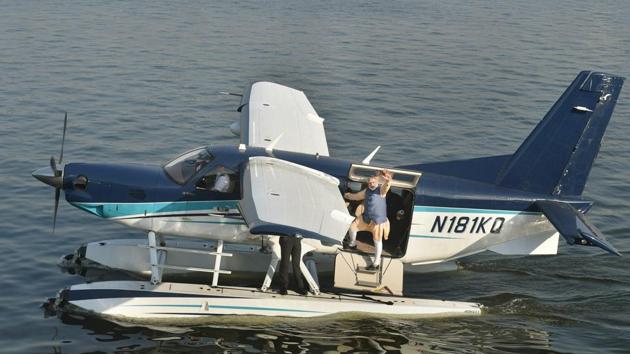As election campaign ends, Modi showcases Gujarat model, Rahul expects ‘zabardast’ results
In the run-up to the Gujarat elections, Prime Minister Narendra Modi spearheaded the BJP’s campaign while newly elected Congress president Rahul Gandhi upped the ante against the ruling party.
Tuesday marked the end of the 49-day high-decibel campaign for what some experts say will be the closest elections fought for the Gujarat assembly in years. On the last day of campaigning, Prime Minister Narendra Modi mixed his characteristic showmanship with the Hindutva-plus-development approach that has worked so well for him and his Bharatiya Janata Party.

He took off in a seaplane from the Sabarmati riverfront, whose development he supervised during his days as chief minister of Gujarat, landed at Dharoi dam, and then drove to the Ambaji temple to offer prayers. He then took the seaplane back.
Along the way, he described the seaplane project as development “the Congress couldn’t imagine” and said his government was developing 103 waterways such as the Sabarmati for use by seaplanes because it wasn’t feasible to have airports everywhere.
“With the government of India and the government of Gujarat working together, our strength rises manifold…. And we will take Gujarat to new heights,” the Prime Minister said, highlighting the advantage of having the same party in both the state and the Centre.
Congress leader Rahul Gandhi, who will take over as president of his party on December 16, was confidence personified and said in a press conference in Ahmedabad that the verdict, out on December 18, would be “zabardast” (tremendous). Gandhi, who has been visiting temples in Gujarat through his campaign in the state, visited the Jagannath temple in the city. Gandhi promised that if elected, his party would ensure uniform development.
The BJP has governed Gujarat for 22 years, but the Congress is hoping to do better this time. In the 2012 assembly elections, the BJP won 119 seats and the Congress 57. In the 2014 Lok Sabha elections, the BJP won all 26 Lok Sabha seats in the state. The Congress has been supported by the Patidars, led by Hardik Patel, some backward classes, led by Alpesh Thakor, and the Dalits, led by Jignesh Mewani.
It is also hoping to cash in on the agrarian crisis in the state, and angst over last year’s demonetisation and this year’s implementation of the Goods and Services Tax, both of which have hit small businessmen in the state. It has promised reservation in government jobs and college seats for the Patidars; the BJP maintains that this reservation promise will not stand legal scrutiny.
Opinion polls give the Congress anything between 37 and 85 seats and the BJP between 92 and 141.
Both Gandhi and Modi have spent a lot of time in Gujarat, as has BJP president Amit Shah. Modi has travelled 30,557 km through the state and held 41 rallies; Gandhi has travelled around 22,000 km and held 140 meetings and rallies. He has also visited 26 temples.
On Thursday, 93 constituencies in Gujarat go to the polls and 22.2 million people will exercise their franchise. In the 2012 election, the BJP won 52 of these and the Congress 39. The remaining 89 constituencies in the 182-member assembly went to the polls last week.
Modi’s seaplane ride, believed to be the first such in India, captured enough eyeballs on the ground and on news television, although some people pointed to a security advisory that prevents the Prime Minister from using a single-engined aircraft.
A police officer familiar with security protocol for VIPs said on condition of anonymity that there is no rule mandating this, but admitted that there is an advisory to the effect that “VIP protectees should preferably fly in twin engine aircraft for domestic travels while during international travels, the aircraft should be equipped with at least three to four engines.”





